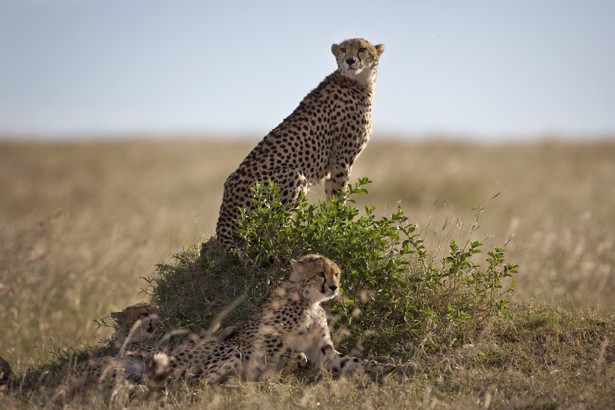The world’s fastest land animal serves as a handy patrol on military bases near wildlife reserves.

The officer was not seriously injured, and was treated for minor wounds on her shoulders and the back of her head. After that, the cheetahs got back to work.
Wait, what?
The cheetahs didn’t wander onto Makhado Air Force Base by accident. They were deployed there earlier this month as part of a program started in the 1990s that places cheetahs on military bases for animal-control purposes. The big cats roam the base freely, hunting small game that might run onto airplane runways from nearby nature reserves and pose risks to flight safety.
“As wild animals become habituated to noises from aircraft, they are no longer frightened off the airstrip at the sound of an oncoming plane,” explains the Hoedspruit Endangered Species Center, which donates cheetahs to the program. Makhado is located near three nature reserves.
The Hoedspruit center, located about a three-hour drive south of Makhado, provided the air base with two male cheetahs this fall. Wim and Tobie, aged six and seven, were born in captivity. They were fitted with GPS collars and brought to Makhado on October 20, where they were kept in a holding area for several weeks “so as to acclimatize them to the sound of aircrafts and their new environment,” according to the center.
The animals were shooed away, but as they stalked off, a warrant officer tried to take their picture. They began to growl. As the warrant officer turned to flee, they pounced.Cheetahs do not usually attack humans because the animals prefer smaller prey. Captive-born cheetahs are familiar with human contact.
The cheetah natural-security program in South Africa began in July 1993, when two female cheetahs were brought to the Hoedspruit Air Force Base, according to a blog post on the website of Camp Jabulani, a private safari lodge located inside the Kapama Game Reserve in South Africa. The military post, located north of the reserve, saw frequent wildlife visitors, and the cheetahs’ presence made a difference.
Makhado was previously home to three other cheetahs. The animals are a better fit for the job than other big cats because “lions are very big and pose a greater threat to people, while leopards are skittish and would probably move away from the area in search of solitude,” explained the Hoedspruit center in a blog post last month. Male cheetahs are even better: “Female cheetahs are solitary animals. Should they make a kill around the airstrip, they will only consume half a carcass and subsequently lure vultures to the area, which can be an even bigger threat to incoming aircraft.”
Makhado spokeswoman Brigadier General Marthie Visser told the AP that Wim and Tobie will remain on the base. She said the military will investigate the “unprecedented incident,” and will do more to educate officers about cheetahs. The cats will serve a two-year tour at Makhado, and then return to the Hoedspruit center, which focuses on breeding cheetahs and eventually releasing them into the wild.
There are between 12,000 and 15,000 cheetahs left in the wild in Africa. The cheetah, the world’s fastest land mammal, is listed as “vulnerable” on the global inventory of threatened species; loss of habitat and prey, as well as hunting by farmers protecting their livestock, have contributed to declines in population.
source
No comments:
Post a Comment